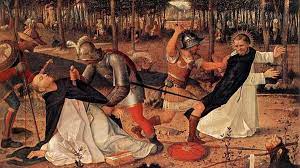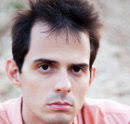Alejandro Carpio
Wokeism and Catharism:
On Religions that Might Have Existed
Alejandro Carpio

The Cathars were a religious sect of dualists that flourished in Southern France and Northern Italy in the 11th Century and was exterminated by a crusade in the 13th Century--the only one that took place on European soil. Almost 800 years later, several historians formulated a reinterpretation of the Cathar phenomenon that considered the possibility that the Cathars did not really exist at all.
This fascinating debate can shed light on the contemporary religious movement known as Wokeism. There are vast methodological differences between studying medieval heresies and addressing contemporary cultural phenomena like Wokeism; even so, Cathar and Woke questions share common ground. When speaking of Wokeism, one of the obstacles that current cultural critics face is the possibility that, like the Cathars, the proponents of Wokeism are more an invention of ours than a clearly identifiable group of subjects who profess an actual religion.
Catharism is said to have been influenced by Bogomilism, a dualist religious movement that originated in Bulgaria in the 10th Century. One of the main tasks of traditionalist historians is understanding and proving how the contact between Bulgarian Bogomils and the French Cathars (if they ever existed) came to be. To this day, the evidence of that contact is thin.
In their book Cynical Theories, Helen Pluckrose and James Lindsay make the case for another transfer of knowledge: in this case, Postmodern philosophy and intersectionality, through the education system, into the population at large. A challenge for the study of Wokeism, if we are to believe Pluckrose and Lindsay, will be to draw a convincing picture of, for example, Foucault’s influence on young American school teachers. This is, of course, an easier task than outlining how traders and travelers transferred a heretic, daring idea from 10th Century Bulgaria to the South of France the next century. But without a careful study of the ways in which the writings of, say, Judith Butler influenced a large segment of the population including young TikTok users, we are left with a degree of speculation. What I mean to stress with this extravagant comparison is that scholars must always be wary of falling into post hoc, ergo propter hoc fallacies and that, in order to prove a transfer of knowledge, one must provide evidence. In a way, Wokeism is a modern heresy. If we understand Postmodernism as a heresy inside the Western Enlightenment tradition, and Wokeism as a popular manifestation of it, by way of my analogy, then we run the risk of playing the part of inquisitors, even if it is not our intention.
Another point of contention is the use of the name “Cathars” to describe the supposed group of people with distinguishable quasi-religious beliefs. It is commonly understood that the dualist heretics in Languedoc called themselves “the good men” and were later named “Cathars” by the historian Charles Schmidt in the 19th Century. “Woke” is also a term with which those who we call “woke” do not necessarily identify. In her study, Taylor points to inquisitorial records where even the name good men “cannot be synonymous with the people whom inquisitors called heretics” (250), thus questioning if they were even called “good men” at all. She suggests that it is not even certain that the Cathars were called “good men”, which terribly complicates the discussion. How can we be sure that there were a group of people (called “Cathars”, “good men” or any other term) when we can’t even organize them under a coherent name? Is the fact that they were called “heretics” enough to guarantee that they were a heretic group? Should we trust the inquisitors?
Those who explore the relationship between Postmodernism and Wokeism tend to do so in a very condemnatory and even hysterical manner; in fact, this has been a key feature of right-wing intellectuals and activists. People like Chris Rufo (and now, regrettably, Lindsay) warn of the “dangers” of a perverse ideology as if they were fervent Dominican monks watching over orthodoxy of the Church. Wokeism is perceived as a heresy of sorts by mainstream contemporary ideology in the sense that it displays a departure from a traditional Western worldview, especially with regards to its Postmodern roots. The term “heresy”, as I submitted before, is a hostile term to describe a religious set of beliefs that is a deviation from mainstream religious ideology and it is thus applicable to understand the “antiwoke” movement. All this is to say that there is a political element to it which we must address and with which we must contend.
 Alejandro Carpio is Associate Professor of Spanish Literature at the University of Puerto Rico.
Alejandro Carpio is Associate Professor of Spanish Literature at the University of Puerto Rico.
Back to Meridian 4.png)

